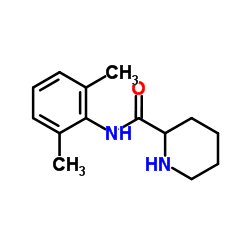Determination of bupivacaine and three of its metabolites in rat urine by capillary electrophoresis.
M A Schieferecke, K J McLaughlin, A A Faibushevich, C E Lunte
文献索引:Electrophoresis 19(16-17) , 2997-3002, (1998)
全文:HTML全文
摘要
A capillary electrophoretic (CE) method for the analysis of urinary extracts of the local anesthetic, bupivacaine, and its three main metabolites, desbutylbupivacaine, 3'-hydroxybupivacaine, and 4'-hydroxybupivacaine, in rat urine has been developed. The limits of detection were 0.22 microM for desbutylbupivacaine and bupivacaine, 0.15 microM for 3'-hydroxybupivacaine, and 0.16 microM for 4'-hydroxybupivacaine. The linear range was from 0.7 microM to 16.8 microM for all four compounds. Migration time and peak height reproducibilities, and extraction efficiencies were determined for all four compounds. Peak height reproducibilities (n = 5) for the overall method were improved through the use of prilocaine as an internal standard. Peak height reproducibilities were 5.6% RSD for desbutylbupivacaine and bupivacaine, and 9.9% RSD for 3'-hydroxybupivacaine and 4'-hydroxybupivacaine. Migration time reproducibilities (n = 5) were 2.4% for all compounds. Urine samples were collected from rats administered therapeutic doses of bupivacaine and extracted using a solid-phase extraction method (SPE). Separation of bupivacaine and its metabolites was achieved in 15 min.
相关化合物
| 结构式 | 名称/CAS号 | 分子式 | 全部文献 |
|---|---|---|---|
 |
N-(2,6-二甲基苯基)哌啶-2-甲酰胺
CAS:15883-20-2 |
C14H20N2O |
|
Kinetics of bupivacaine after clonidine pretreatment in mice...
1995-05-01 [Can. J. Anaesth. 42(5 Pt 1) , 434-7, (1995)] |
|
Population pharmacokinetic analysis of ropivacaine and its m...
2011-09-01 [Br. J. Anaesth. 107(3) , 409-24, (2011)] |
|
Bupivacaine kinetics during hyperthermia in rats.
1994-03-01 [Can. J. Anaesth. 41(3) , 253-6, (1994)] |
|
Determination of bupivacaine and metabolites in rat urine us...
2003-07-01 [Electrophoresis 24(14) , 2340-7, (2003)] |
|
Lack of metabolic racemisation of ropivacaine, determined by...
1995-01-01 [Chirality 7(4) , 272-7, (1995)] |